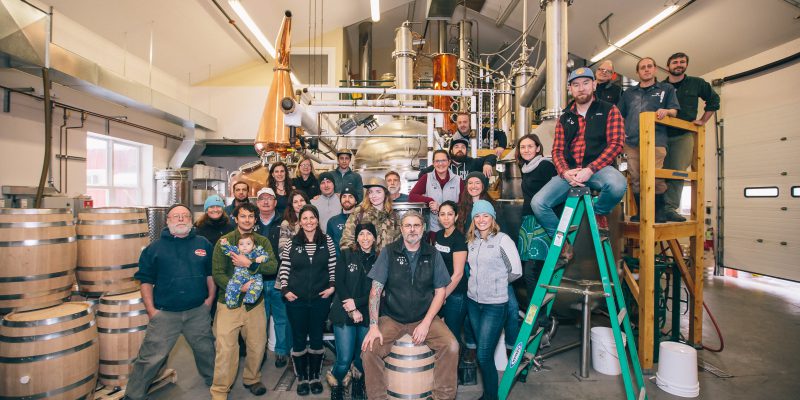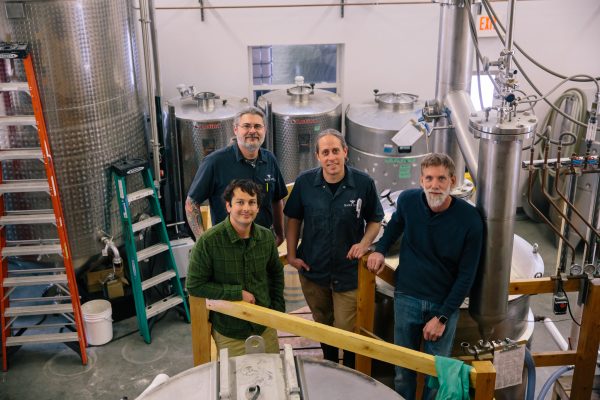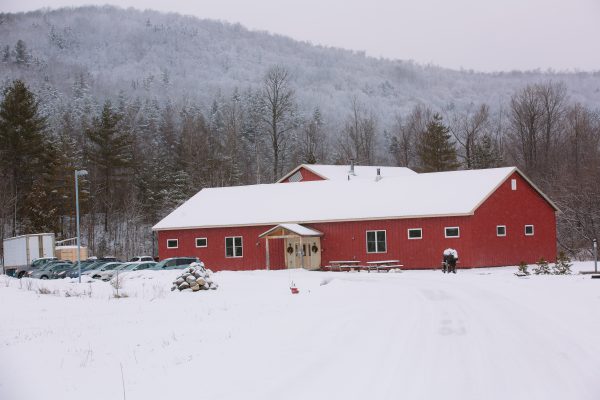The day before it plans to produce a batch of its crowd-pleasing gin, a distillery discovers it is several pounds short of the right malted barley for the mash.
A team member volunteers to pick up a special order at the supplier – a 10-hour round trip – to keep the batch on schedule. Another hero saves the day.
With small teams, shoestring budgets and stiffening competition, many craft distilleries rely on extraordinary and impromptu efforts like this to keep business running, but it doesn’t have to be that way.
“You should never need a hero to make a quality product and serve customers the right way,” said Chris Ely, the production manager at Vermont’s Caledonia Spirits. “The right systems, processes and controls will help standardize the work, no matter who’s in what role.”
Teams can then sharpen and build on those proper, well-documented procedures, leading to ongoing growth and success. That is the essence of continuous improvement (CI), a concept and mindset that has helped the likes of Nike, Intel, Toyota and Caterpillar stand out from the pack.
Known by various names and processes, including Total Quality Management, Kaizen, Lean and Six Sigma, which has a karate-like colored belt certification system for workers who practice it, CI became a popular tool for improving efficiency at manufacturing plants in the 1980s and grew to have a wider impact.
Craft distilleries can reap the benefits of CI as well. After all, any firm, large or small, can find ways to get better at what they do.
CI requires the right culture and KPIs
Distilleries can begin to build a CI mindset right from the start. “Take the time to set goals that align with your vision,” said Steve Wright, a distilling expert with First Key, which provides consulting services to distilleries and breweries. “That will help you order the right equipment and set up shop in a scalable fashion.”
The team and culture must be the right fit as well.
“Continuous means it doesn’t stop,” emphasizes Ely, who is a Six Sigma black belt. “It’s constant change.” That can unnerve some workers.
“It’s important that you have the right people by way of hiring or training,” he added. “Build that culture early…If you have a team of folks who don’t like change or resist change that will make it a heck of a lot harder to grow.”
Though approaches can vary, firms that apply CI practices typically focus on four areas: safety, quality, productivity and costs. Distilleries can identify key performance indicators (KPIs) to track progress and trends in each area.
Once the right KPIs are identified, a distillery can obtain its baseline measures (where it is), set a realistic target (where it wants to go) and build a plan to get there.
Though some common metrics are shared below, the KPIs will vary based on the distillery’s own goals and vision. “There isn’t one magic metric or number. Find what’s most meaningful to you.” said Ely. “Then you can take the right steps to move the needle.”
Safety
“Safety first” became a popular saying for a reason. Haphazard practices and unsafe work spaces can hurt employee morale, increase costs and affect product quality. Dark rate (lost time incidents) and near misses are two KPIs distilleries can track to maintain a safe workplace.
The down time created by an incident, such as a spill, can be tracked easily. Near misses are more difficult to log but serve as a leading indicator and should be watched closely. For example, a worker standing under a forklift load may not result in a safety issue, but because this action violates a rule and had the potential to become an incident, it should be tracked and addressed.
Quality
Quality measures much more than simply taste. Tracking and addressing customer feedback can help distilleries solve issues ranging from poor service to improper labeling. Production lines can also view defects per million opportunities to gauge success and hone processes.
Productivity
Proof gallons per labor hour is the most common KPI for distillers. The goal is to get the most out of the team, equipment and materials without sacrificing quality or safety. Distillers can adjust recipes, dial in heating and cooling cycles, install more energy-efficient equipment and take other steps to make improvements. They can also automate more steps – such as conveying grains to the cooker rather than carrying by hand – to save big chunks of time.
Costs
By tracking costs per unit produced distilleries can gain data that will help inform decisions that impact material and labor expenses. For example, water is a major cost in the distilling process, First Key’s Wright notes. Distilleries have to weigh the pros and cons of using high volumes of municipal water for cooling purposes versus investing in a cooling tower or glycol chiller.
Closely monitoring inventory is critical, as well. Sales cycles vary during the year, so it may be necessary to produce product in the winter that won’t be sold until spring or summer. Wright urges distillery managers to take the time to sharpen their forecasting process to avoid missing out on sales or being saddled with unsold inventory.
Use data, insights and CI tools to make improvements
Whichever KPIs are identified, Caledonia’s Ely said they should be reviewed regularly to help spark conversations that will lead to improvements or resolve issues quickly. And he strongly recommends making this a broad-based effort, as those closest to the work often have the best ideas. “Try to be as transparent as possible with what you want to accomplish. That will help bring the team on board and be part of the solution.”
A number of CI-related tools can help get the most of those conversations. For example, the “five whys” technique is designed to get to the root cause of a problem. Team leaders can start by asking why a certain issue occurred. Then the team repeatedly asks “Why?” as each layer of the issue comes to the surface. The name comes from an observation that it typically takes five “whys” before the true root cause is understood, allowing concrete steps to resolve the problem to be identified. The Ishikawa “cause and effect” diagram, commonly called a fishbone, is another team approach to problem solving.
There is no best way to apply these tools or instill a continuous improvement mindset, caution Wright and Ely. The danger is in not making CI part of the distillery’s culture. There are now more than 1,300 craft distilleries in the U.S., up from 204 in 2010. Canada is home to another 100-plus.
As competition rises – and consumers become more demanding – those craft distilleries that are always focused on making every aspect of their business better will stand out over the long term.
Managing growth – A look at CI in action
When forecasting sales last year a New England distillery projected 40 percent growth. That’s great, right? Yes, but growth at that pace comes with challenges. Distillery leaders quickly realized they did not have the capacity to meet anticipated sales levels in at least one quarter.
The team used common continuous improvement practices to create a plan to meet the turbo-charged demand without increasing per-unit costs or time – while producing the same high-quality spirits.
They held brainstorming sessions to dig into issues and engage the whole team. They created cause-and-effect diagrams to detail specific challenges. They even built a scale model of the facility using cardboard and Post-It notes to game out ideas. All along they identified and charted targeted metrics (KPIs) to understand trends and display clear goals.
Through this process they uncovered and addressed eight “wastes” that bit into productivity.
For example, one – labeled “transportation” – revealed how raw materials and finished products were moved around several times each day. The solution: they placed raw materials closer to point of use, and they reorganized the floor plan to place packaging closer to the distillery and finished goods storage alongside packaging.
Proper production levels were another waste. The packaging and distillery teams had limited view of long-term forecasts, leading to under- and over-production. To address that the teams now have access to annual projections and hold weekly production schedule meetings.
By working to eliminate or reduce each waste, the distillery is now in a much better position to meet the dramatically increased demand.





